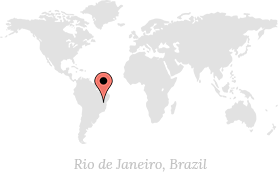What's The Difference Between Frontend And Backend Web Development?
If you’ve just started learning web development, you’ll probably have heard tons of talk about frontend and backend programming. But what exactly do we mean by this? If you’re a beginner within field, it is often hard to understand not only which is which, but also what's covered by one or the opposite.
While frontend and backend development is certainly distinct from one another, they’re also like two sides of the same coin. A website’s functionality relies on every side communicating and operating effectively with the opposite as one unit. Is one more important than the other? Nope. They both play very vital roles in web development. So where should we start? Let’s flip that coin and get your questions answered.
1. What Is Frontend Development?
2. Which Are The Main Frontend Development Languages?
3. What Is The Difference Between Frontend Development And Web Design?
4. What Is Backend Development?
5. Should I Learn Frontend Or Backend Development, Or Both?
2. Which Are The Main Frontend Development Languages?
3. What Is The Difference Between Frontend Development And Web Design?
4. What Is Backend Development?
5. Should I Learn Frontend Or Backend Development, Or Both?
1. What Is Frontend Development?
The frontend of a internet site is what you see and interact with on your browser. Also stated as “client-side”, it includes everything the user experiences directly: from text and colours and hues to buttons, images, and navigation menus.
Let’s say you decide to start a business. You open a dress shop and with a knowledgeable website to present your company to customers and tell them where you’re located. Maybe you’ll include a couple of photos and a few information about your products. All you would like are frontend technologies to create your website.
2. Which Are The Main Frontend Development Languages?
These three languages will do the trick:
HTML
HTML is a fundamental coding language that creates and organizes web page so it are often displayed by a browser. You can learn more about HTML here.
CSS
CSS may be a language that accompanies HTML and defines the design of a website’s content, such like layout, colours, fonts, etc.
JavaScript
JavaScript may be a programming language used for more interactive elements like drop-down menus, modal windows, and get in touch with forms.
Together these essentials create everything that’s visually presented once you visit a webpage — whether it’s online shopping, reading the news, checking your email or conducting a Google search.
In addition to basic front-end languages, you’ll encounter frameworks like Bootstrap and Angular, also as JavaScript libraries like jQuery, and CSS extensions like Sass and fewer. There’s an extended list of resources like these, which support HTML, CSS, and JavaScript. Their purpose is just to form code (and the method of writing it) more manageable and arranged by providing various tools and templates compatible with common coding languages.
3. What's The Difference Between Frontend Development And Web Design?
It’s important to note that, although frontend development deals with the visual and interactive side of a internet site, it's not similar as web design.
Frontend developers don’t actually design these front-facing aspects of a internet site; this is often the work of a web designer, or more specifically, a UI designer. The frontend developer takes this design and builds it into something functional using the frontend languages we talked about above.
So, web designers are concerned with design: the look and feel of the website, how it’s laid out, and what buttons and touchpoints the user experiences. Frontend developers are concerned with functionality; the engineering that transforms these designs into a live, interactive website.
Behind The Scenes
Fast forward a few months. Your business website looks great, and therefore your dress shop has become incredibly successful. Now customers want to shop for quantities of items for his or her furry friends and begin asking if they will order online.
So you choose to open an online web where people can shop and place orders anytime. This means your site will now have to store information about products, purchases, user profiles, credit cards, and more. How will you manage this data so you'll start delivering treats for all those wagging tails? This is where backend development comes in.
4. What Is Backend Development?
So far, what you've got an example of a static website — its content doesn’t really change much. For static sites, all the required information that determines what’s on the online web page is within the frontend code itself. Static websites are good for showcasing things like businesses, restaurants, portfolios, or professional profiles. But if you want to turn your site into something that users can interact with, you’ll need to get more in-depth with regard to what’s going on behind the scenes of the website.
The backend (or “server-side”) is a portion of the web site you don’t see. It’s meant for storing and organizing data, and ensuring everything on the client-side actually works. The backend communicates with the front-end, sending and receiving information to be displayed as an online web page. Whenever you fill out a contact form, type in a web address, or make a sale(any user interaction on the client-side), your browser sends an invitation to the server-side, which returns information within the sort of frontend code that the browser can interpret and display.
Your new site will need to have additional backend components to form it a dynamic web application — an online website whose content can change based on what is in its database, and that can often be modified by user input. This is distinct from a static website, which doesn’t require a database because its content generally stays the same.
Server-Side Set Up
Your website needs a database to manage all the customer and product information. A database stores website content during the structure that creates it easy to retrieve, organize, edit, and save data. It runs on a foreign computer(out-side network computers) called a server. There are many different databases that are widely used, like MySQL, SQL Server, PostgresSQL, and Oracle.
Your app will still contain frontend code, but it also has to be built utilizing a language that a database can recognize. Some common backend languages are Ruby, PHP, Java, .Net, and Python. These programming languages often run on frameworks that simplify the online web development process. Rails, for example, maybe a framework written in Ruby. The hence-named Ruby on Rails may be popular technology for building dynamic web apps that makes the process much faster.
With all of those parts working together correctly, customers can visit your website and look for the particular kind of snack they need to shop for - perhaps they need to tug up an inventory of treats made especially for small kids. Once they type it into the search box (on the frontend), the application looks through all the product data stored within the database (backend) and returns the appropriate information in the form of frontend code that the browser displays as the user’s requested list.
Open for Business!
So now you’ve got a dynamic web app that makes use of frontend and backend technologies. You use frontend languages to make your website look great and easy to navigate. Behind the scenes, the backend holds together all the frontend components and makes it possible to do things like store purchase history and product details, create secure editable user accounts, and more. As you can see, both sides have very different roles. But it’s the two working together that ultimately defines user experience and makes it possible for a website to function at all.
5. Should I Learn Frontend Or Backend Development, Or Both?
If you’re keen to learn web development but aren’t sure whether to go down the frontend or backend route, it’s important to think about the day-to-day tasks of every. If you wish the thought of working with visual designs and bringing them to life, creating a first-class user experience, then you’ll probably enjoy working within the frontend.
If you enjoy working with data, deciding algorithms and coming up with ways to optimize complex systems, you would possibly to work as a backend developer.
However, the excellence between frontend and backend is not always so clear-cut. Some developers are proficient in both the frontend and backend; these are what’s reoffered to as full-stack developers.
Now you hopefully have an honest idea of the differences between the frontend and backend, and the way they work together to create functional, user-friendly websites. To learn more about becoming a web developer, discover the kinds of skills and qualifications you’ll need here.
A Few Final Words
If you’re curious about learning web development – and maybe even becoming a full-time, full-stack web developer – I wholeheartedly recommend the CareerFoundry Full-Stack Web Development Course. On starting the course, you’ll be paired with two experienced web developers – your mentor and tutor – who’ll guide you from complete beginner to job-ready developer within seven months.
Get in-tuned together with our Teen Stuff Today. Happy learning!
Get in-tuned together with our Teen Stuff Today. Happy learning!








0 Comments